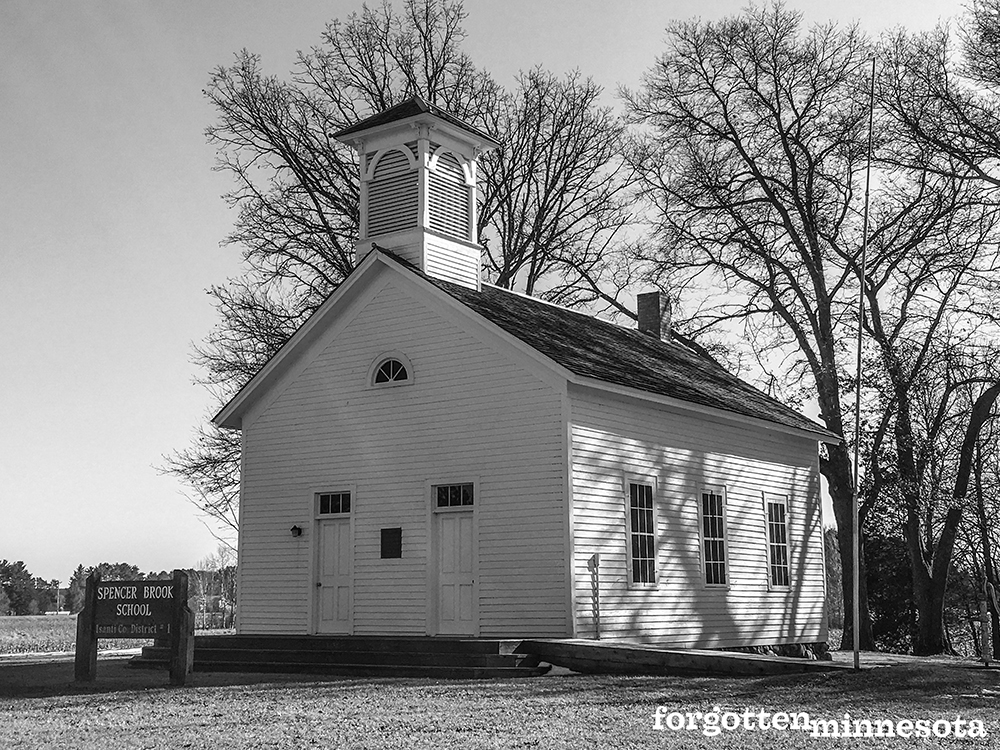Spencer Brook: Nearly a Ghost Town
Settled in 1854 by Pennsylvania native Benjamin Spencer, Spencer Brook was one of the first communities in Isanti County. During the 1850s, Spencer Brook became a favorite spot for east coast Yankees seeking lumbering opportunities. The nearby Rum River provided the flowing waters needed to float logs downstream to the Twin Cities.
The first post office in the county was established in Spencer Brook in 1857 and a school in 1858. A hotel, blacksmith shop, implement store, creamery, photography shop, general store, and a grist mill soon followed. To ease crossing the Rum River, a ferry began operation in 1870. In 1874 a bridge was built to replace the ferry, but it was destroyed by ice the following spring. The brook that splits the town was dammed for the grist mill, and the resulting millpond was a popular recreation area for the residents.






Spencer Brook became known as the largest settlement of native-born Americans in the state outside of the Twin Cities. Swedish immigrants began arriving in the area in the 1870s and fields of potatoes and navy beans began to surround the township.
By the mid-1870s, the number of children in Spencer Brook outgrew the private buildings and homes where they were being taught. In 1877, District #1 school was constructed to meet the educational need of the community’s children. It was the first of 67 rural schools that would eventually be established in Isanti County. One teacher taught first through eighth grade. In the fall, classes were suspended for the potato harvest and became known as potato vacation. Nearly 500 students were instructed in math, history, reading, and English by 100 teachers between 1858 and 1945 when the school was consolidated with Princeton. The school was restored in the late 1960s and placed on the National Register of Historic Places in 1980.
A Swedish Baptist Church was built in Spencer Brook in 1880, and a United Methodist Church in 1898. Minnesota’s thirteenth Governor and Spencer Brook native, David M. Clough, spoke to a crowd of more than 800 people during the dedication of United Methodist Church in 1899.




The Swedish Baptist Church saw a significant decline in attendance through the 1910s and it was razed in 1920. United Methodist Church also saw a drop in attendance during this time, and the church closed. However, in the mid-1930s a group of local families committed to restoring and reopening the church. The women of Spencer Book held dinners and auctions, sold eggs, needlework, and baked goods in an effort to raise the money needed to meet their goal. They raised enough to complete the repairs and add a basement and steeple. An ongoing fundraising effort brought in enough money to add a fellowship hall and kitchen as well.
Today, the church bell still rings to announce Sunday service, but most of the other remnants of Spencer Brook are long gone. By the 1920s, business in the town had declined and many of the buildings were demolished. The implement store was razed in 1895, the post office in 1908, and the blacksmith shop and the creamery in 1911. Eventually, this small, independent town was absorbed into the larger community.
